#Covid-19 Education Solution
Explore tagged Tumblr posts
Text
Medical care demands a safe, clean environment. With the rise of COVID-19 and antibiotic-resistant diseases, now more than ever, cleaning must go beyond appearances as a matter of community health.
So, how can you ensure that your ER, recovery rooms, hallways, kitchen, washroom areas, elevators—every floor in the hospital—are clean enough to conform to the standards of high-quality healthcare? With our commecial healthcare cleaning tools combined with the i-know kit, you can monitor the cleanliness of all touchpoint areas. See the best cleaning tools for hospitals, including our i-know test kit to determine if surfaces have been adequately cleaned.
With i-know, it only takes around 60 seconds to measure dirt levels on a surface. That speed and accuracy empowers cleaning teams with useful data to get objective feedback on the quality of their commercial cleaning practises.
#clean environment. With the rise of COVID-19 and antibiotic-resistant diseases#cleaning must go beyond appearances as a matter of community health.#recovery rooms#hallways#kitchen#elevators—every floor in the hospital—are clean enough to conform to the standards of high-quality healthcare? With our commecial healthcar#you can monitor the cleanliness of all touchpoint areas. See the best cleaning tools for hospitals#it only takes around 60 seconds to measure dirt levels on a surface. That speed and accuracy empowers cleaning teams with useful data to ge#Cordless vacuums#Disinfectant sprayers#Air purifiers for offices#Cleaning equipment for healthcare#Floor scrubber machines#Cordless vacuum cleaners for business#Disinfection systems for hospitals#Healthcare cleaning solutions#Educational facility cleaning tools#Hospitality cleaning equipment#Industrial floor cleaning machines#Retail cleaning systems#Best floor scrubbers for commercial use
0 notes
Text
COVID-19 Pandemic: Unraveling the Global Learning Crisis
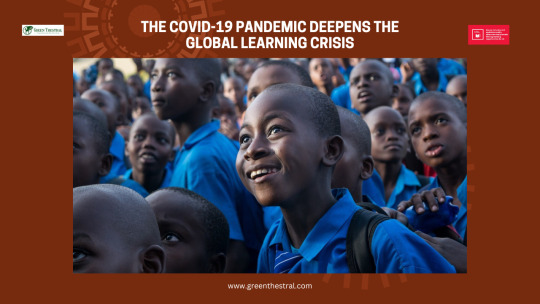
The COVID-19 pandemic has left an indelible mark on the world, disrupting economies, healthcare systems, and everyday life. One of the most significant areas affected by this unprecedented global crisis is education. With schools closing their doors to prevent the spread of the virus, the world has witnessed the deepening of a global learning crisis. The pandemic's impact on education has been profound, exacerbating existing inequalities and creating new challenges for learners, educators, and policymakers worldwide. In this article, we will delve into the ways the COVID-19 pandemic has intensified the global learning crisis and explore potential strategies to address these pressing issues.
The Disruption of Education During the Pandemic
When the World Health Organization (WHO) declared COVID-19 a pandemic in early 2020, governments worldwide swiftly implemented strict measures to curb the virus's spread. One of the most crucial measures was the closure of educational institutions. Overnight, classrooms turned into virtual learning environments, and educators had to adapt rapidly to online teaching methods.
While some countries were better equipped to transition to online education, others faced significant challenges due to a lack of infrastructure and access to technology. The digital divide became more pronounced as students from low-income families or remote regions struggled to keep up with their studies. As a result, millions of children and young adults were left without access to education, further exacerbating the global learning crisis.
Widening Educational Inequalities
The pandemic has widened existing educational inequalities worldwide. Students from privileged backgrounds with access to reliable internet connections, laptops, and private tutors were better equipped to continue their education remotely. On the other hand, students from marginalized communities often lacked the necessary resources to participate in online learning effectively.
Furthermore, learners with disabilities faced additional barriers, as many online platforms were not designed to accommodate their specific needs. This disparity in access to quality education has the potential to have far-reaching consequences, as it perpetuates social and economic inequalities for generations to come.
Learning Loss and the Educational Gap
Extended school closures and disrupted learning routines have resulted in significant learning loss for many students. Studies have shown that prolonged absences from the traditional classroom setting can lead to a decline in academic performance and cognitive development.
Moreover, the pandemic has created an educational gap between different age groups. Early childhood education, a critical developmental phase, has been severely impacted, potentially affecting children's long-term cognitive and social-emotional development. Similarly, older students faced the stress of delayed examinations, college admissions, and uncertainty about their future prospects.
Mental Health Impact on Students and Educators
The pandemic's toll on mental health has been considerable, impacting both students and educators. The abrupt shift to remote learning and the uncertainties surrounding the pandemic have caused stress, anxiety, and feelings of isolation among students. Many have struggled to cope with the challenges of online learning and the absence of social interactions with peers.
Educators, too, have faced unprecedented pressures, adapting to new teaching methods, dealing with technological challenges, and juggling personal responsibilities amidst the pandemic. The resulting burnout and fatigue among teachers have affected the overall quality of education and student support.
Solutions to Mitigate the Global Learning Crisis
While the COVID-19 pandemic has undoubtedly exacerbated the global learning crisis, there are several strategies that policymakers, educators, and communities can adopt to address these challenges and build a more resilient education system:
1. Bridging the Digital Divide
Governments and educational institutions must prioritize bridging the digital divide to ensure all students have equal access to quality education. This can be achieved through initiatives that provide laptops, tablets, or internet connectivity to students from disadvantaged backgrounds. Additionally, investing in the development of educational content optimized for low-tech devices can increase accessibility for students with limited resources.
2. Blended Learning Approaches
Blended learning, a combination of online and in-person instruction, can offer a flexible and inclusive approach to education. This approach allows for personalized learning experiences while maintaining the benefits of face-to-face interactions with teachers and peers. By incorporating digital tools and resources into the curriculum, educators can cater to diverse learning styles and individual needs.
3. Teacher Training and Professional Development
Empowering teachers with the necessary skills and tools to adapt to changing circumstances is crucial. Comprehensive training in online teaching methodologies and the use of technology in education can enhance the quality of remote learning. Moreover, providing ongoing professional development opportunities can help teachers stay motivated and engaged, ultimately benefiting their students' learning outcomes.
4. Prioritizing Early Childhood Education
Recognizing the significance of early childhood education, governments should prioritize resources for early learning programs. Investing in early childhood education can have a profound impact on children's cognitive and social development, setting them on a path to success in later years.
5. Strengthening Support Systems
To address the mental health challenges faced by students and educators, it is essential to establish robust support systems within educational institutions. Counseling services, peer support groups, and mental health awareness programs can create a nurturing and empathetic learning environment.
Conclusion
The COVID-19 pandemic has indeed deepened a global learning crisis, affecting millions of learners around the world. The disruption of education, widening educational inequalities, learning loss, and the mental health impact on students and educators have posed significant challenges to the education sector.
However, by implementing innovative strategies such as bridging the digital divide, adopting blended learning approaches, prioritizing teacher training, investing in early childhood education, and strengthening support systems, we can begin to mitigate the adverse effects of the pandemic on education.
As we navigate the path to recovery, it is vital for governments, educators, parents, and communities to come together and work collaboratively towards building a more resilient and inclusive education system that can withstand future challenges. Only through collective efforts can we ensure that every child has access to a quality education, regardless of the circumstances they may face. Let us seize this opportunity to reshape education for a brighter and more equitable future.
What's In It For Me? (WIIFM)
In this blog article on the COVID-19 pandemic's impact on education, you will gain a comprehensive understanding of how the global learning crisis has deepened in the wake of this unprecedented health crisis. Discover the challenges faced by students, educators, and policymakers, and explore effective strategies to address these issues. Learn about the widening educational inequalities, learning loss, and the mental health impact on learners and teachers. Moreover, find practical solutions and actionable steps to contribute to building a more resilient and inclusive education system for a brighter future.
Call to Action (CTA)
Join us in addressing the global learning crisis deepened by the COVID-19 pandemic. Share this article with your friends, family, and colleagues to spread awareness about the challenges faced by learners and educators worldwide. Engage in discussions about the importance of equitable access to quality education and the need for innovative solutions. Support initiatives that bridge the digital divide, prioritize early childhood education, and promote teacher training and professional development. Together, let's work towards building a stronger and more sustainable education system that can withstand future challenges.
Blog Excerpt
The COVID-19 pandemic has had a profound impact on education globally, deepening a pre-existing learning crisis. With schools closing their doors to curb the virus's spread, millions of students were left without access to education, exacerbating existing educational inequalities. This blog article delves into the far-reaching consequences of the pandemic on learners, educators, and communities. Discover how the sudden shift to remote learning widened the educational gap and led to learning loss among students. Uncover the mental health challenges faced by learners and teachers during these uncertain times. But, more importantly, explore actionable solutions to mitigate the global learning crisis and build a more resilient and inclusive education system.
Meta Description (320 characters)
Discover how the COVID-19 pandemic has deepened the global learning crisis. Explore its impact on education, widening inequalities, learning loss, and mental health challenges. Learn actionable strategies to address these issues and build a more resilient education system. Join us in shaping a brighter future.
#COVID-19 pandemic and education crisis#Impact of COVID-19 on global education#Challenges in remote learning during pandemic#Educational inequalities deepened by COVID-19#Learning loss due to school closures#Mental health impact on students and teachers#Solutions for the global learning crisis#Bridging the digital divide in education#Blended learning during COVID-19#Teacher training for online education#Early childhood education importance#Coping with remote learning challenges#Supporting students' mental health#Inclusive education post-pandemic#Rethinking education post-COVID-19#Resilient education systems for the future#Equity in online learning resources#Adapting curriculum for remote education#Parental involvement in virtual learning#Online education and socio-economic disparities#Government policies for education post-pandemic#Building community support for learners#Impact of the pandemic on higher education#Addressing the digital divide in rural areas#The role of technology in pandemic education#Redefining the role of educators during COVID-19#Promoting student engagement in virtual classrooms#Innovations in teaching methods post-pandemic#Fostering creativity and critical thinking in online education#Collaborative learning in a virtual environment
0 notes
Text
The Best News of Last Week
1. ‘It was an accident’: the scientists who have turned humid air into renewable power
Greetings, readers! Welcome to our weekly dose of positivity and good vibes. In this edition, I've gathered a collection of uplifting stories that will surely bring a smile to your face. From scientific breakthroughs to environmental initiatives and heartwarming achievements, I've got it all covered.

In May, a team at the University of Massachusetts Amherst published a paper declaring they had successfully generated a small but continuous electric current from humidity in the air. They’ve come a long way since then. The result is a thin grey disc measuring 4cm across.
One of these devices can generate a relatively modest 1.5 volts and 10 milliamps. However, 20,000 of them stacked, could generate 10 kilowatt hours of energy a day – roughly the consumption of an average UK household. Even more impressive: they plan to have a prototype ready for demonstration in 2024.
2. Empty Office Buildings Are Being Turned Into Vertical Farms

Empty office buildings are being repurposed into vertical farms, such as Area 2 Farms in Arlington, Virginia. With the decline in office usage due to the Covid-19 pandemic, municipalities are seeking ways to fill vacant spaces.
Vertical farming systems like Silo and AgriPlay's modular growth systems offer efficient and adaptable solutions for converting office buildings into agricultural spaces. These initiatives not only address food insecurity but also provide economic opportunities, green jobs, and fresh produce to local communities, transforming urban centers in the process.
3. Biden-Harris Administration to Provide 804,000 Borrowers with $39 Billion in Automatic Loan Forgiveness as a Result of Fixes to Income Driven Repayment Plans

The Department of Education in the United States has announced that over 804,000 borrowers will have $39 billion in Federal student loans automatically discharged. This is part of the Biden-Harris Administration's efforts to fix historical failures in the administration of the student loan program and ensure accurate counting of monthly payments towards loan forgiveness.
The Department aims to correct the system and provide borrowers with the forgiveness they deserve, leveling the playing field in higher education. This announcement adds to the Administration's efforts, which have already approved over $116.6 billion in student loan forgiveness for more than 3.4 million borrowers.
4. F.D.A. Approves First U.S. Over-the-Counter Birth Control Pill

The move could significantly expand access to contraception. The pill is expected to be available in early 2024.
The Food and Drug Administration on Thursday approved a birth control pill to be sold without a prescription for the first time in the United States, a milestone that could significantly expand access to contraception. The medication, called Opill, will become the most effective birth control method available over the counter
5. AIDS can be ended by 2030 with investments in prevention and treatment, UN says
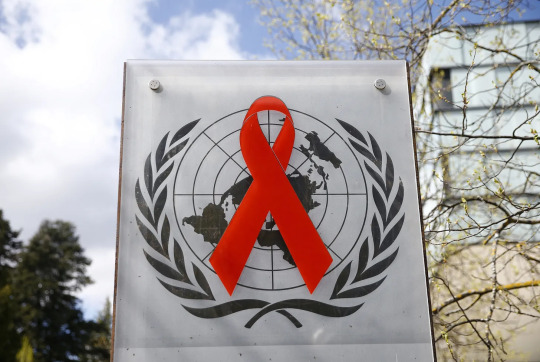
It is possible to end AIDS by 2030 if countries demonstrate the political will to invest in prevention and treatment and adopt non-discriminatory laws, the United Nations said on Thursday.
In 2022, an estimated 39 million people around the world were living with HIV, according to UNAIDS, the United Nations AIDS program. HIV can progress to AIDS if left untreated.
6. Conjoined twins released from Texas Children’s Hospital after successfully separated in complex surgery

Conjoined twins are finally going home after the pair was safely separated during a complex surgery at Texas Children’s Hospital in June.
Ella Grace and Eliza Faith Fuller were in the neonatal intensive care unit (NICU) for over four months after their birth on March 1. A large team of healthcare workers took six hours to complete the surgery on June 14. Seven surgeons, four anesthesiologists, four surgical nurses and two surgical technicians assisted with the procedure.
7. From villains to valued: Canadians show overwhelming support for wolves

Despite their record in popular culture, according to a recent survey, seven in 10 Canadians say they have a “very positive” view of the iconic predators.
Here's a fascinating video about how wolves changed Yellowstone nat'l park:
youtube
----
That's it for this week :)
This newsletter will always be free. If you liked this post you can support me with a small kofi donation:
Support this newsletter ❤️
Also don’t forget to reblog.
1K notes
·
View notes
Text
@VigilantFox
Subscribe
Longtime Democrat Bill Ackman Fires Off a Dire Warning to America He says the Democratic Party's policies are so destructive that they're indistinguishable from what our worst enemies would do to "destroy America from within." Ackman then dropped the receipts with 33 damning examples:
1. Open borders, unvetted immigrants.
2. Inflationary spending, rising deficit.
3. Chaotic Afghanistan withdrawal, loss of life.
4.Excessive regulations stifling business.
5. Release of violent criminals without bail.
6. Decriminalizing shoplifting, promoting lawlessness.
7' Anti-fracking policies, rising energy costs.
8. DEI ideologies dividing society.
9. Gender fluidity education, harm to children’s health.
10. Support for riots, school closures for COVID-19.
11. Anti-American, anti-Israel protests unchecked.
12. Exploding antisemitism, no action.
13. Vaccine mandates, censoring scientific dissent.
14. Censorship of free speech.
15. Legal attacks on political opponents.
16. Defunding police, loss of public safety.
17. Subsidizing inferior tech, hurting innovation.
18. Government overreach in private sector solutions.
19. Banning gas-powered cars and stoves.
20. No response to terrorist attacks on Americans.
21. Withholding arms from key Middle East ally.
22. Lifting sanctions on adversaries, bad hostage deal.
23. Removing terrorists from watchlists.
24. Lying about president’s cognitive health.
25. Ignoring unhealthy food policies.
26. Proliferation of risky vaccines for children.
27. No liability for pharma industry, excessive vaccines.
28. Convincing minority youth they are victims.
29. Inadequate protection for alternative candidates.
30. Blocking alternative candidates from ballots.
31. Backroom selection of Democratic nominee.
32. Choosing inferior candidates over better options.
33. Opposing voter ID and citizenship proof.
15 notes
·
View notes
Text
Also preserved in our archive
Besides getting the year wrong and doing a little minimizing, this is a pretty good article. If more people were at her level, we'd be okay right now instead of facing down Delta Wave 2: The Search for Curley's Gold with barely 18% vaccine uptake and maybe like 7% of people masking at all...
By Ana Ribeiro
On December 31, 2019, the World Health Organization (WHO) received an alert about cases of pneumonia in Wuhan, China. A week later, the authorities affirmed that a new strain of coronavirus, SARS-CoV-2-virus, was in circulation. Having gained repercussions in media such as Covid-19, the disease had an impact on the global scenario after infecting 774 million people and causing 7 million deaths, until now.
During the pandemic scenario, the world had to face almost two entire years of social isolation, obligatory use of masks and a new lifestyle, while the entire population waited for a solution and to “come back” for normality.
Even though people had to face almost two entire uncertain years, it seems that society forgot the virus’ existence and its damage, since no one worries about prevention or how many people are getting infected.
Until November 2, 2024, Brazil had confirmed more than 780 thousand cases and 5 440 deaths per Covid-19, but the low repercussion of the infections on media and low vaccination coverage shows that indifference predominates over a public health problem.
From the politic DENIALISM to personal denying In May of 2023, the World Health Organization decreed the end of the Public Health Emergency for Covid-19, but even on the pandemic’s peak many governments had a denialism posture, like Brazil and United States, countries that became a reference in a reckless posture. The presidents during that period were Jair Bolsonaro and Donald Trump, two figures that spread fake news about the danger and high transmissibility of the virus, in addition to denying the effectiveness of the Covid-19 vaccine.
By attacking public health, making jokes about using masks and investing in the industry of palliative treatments, these politicians contribute to an increase of cases and deaths. From the beginning of 2020 until the end of 2024, Brazil had more than 38 million cases confirmed and more than 700 thousand deaths, while the United States had almost 100 million cases and more than 1.1 million deaths.
The denialism position still presents consequences currently, since the population denies the virus’s existence affirming that there’s no danger if the pandemic is not happening now, from small actions like not using masks when they get sick, to enormous measures such as not getting vaccinated anymore.
The speeches against vaccination prejudices and disinformation contributed to a scenario like seen in Brazil this year, in which the Ministry of Health burned almost 11 million doses of covid’s vaccine, since it exceeded the expiration date because the population didn’t complete the vaccine schedule.
Even though an ideology has been created around Covid-19, many people want to “forget” the pandemic situation, not for political influence, but for personal reasons. People who suffered from the virus, by losing someone or getting mentally sick with social isolation, don’t want to talk about the pandemic anymore, because they consider it too painful.
The effects after those years The Covid-19 pandemic has had an enormous impact on society since the population still feels the effects of this virus that emerged three years ago. Research shows that areas such as education, public health and politics were affected during this period.
According to UNESCO, more than 1.6 billion students were harmed by the pandemic, since the situation required a long-distance method of learning, and many children and teenagers didn’t have access to the pillar of this system: internet. The principal consequence of online classes is truancy, seeing that the lack of internet left students with a few or non-classes, impacting on scholar development – with drops in grades and commitment with class attendance- and increasing the education inequality around the world.
In parallel with education, the health sector also suffered with changes after Covid-19, since the entire world started investing more in sanitary campaigns, hospital structures and vaccination. Even though authorities turned their attention to vaccine production, the politicization around vaccination – especially in denialist countries that spread fake news about the ineffectiveness of this disease prevention method- contributed to low vaccination coverage, as seen in Brazil where 80% of the population didn’t take the mandatory doses for Covid-19.
Furthermore, the pandemic contributed to the increase of numerous illnesses, like the growth of 20% on cognitive sequelae and memory loss in people who had Covid and the increase of 25% in mental issues – such as burnout, anxiety and depression-, especially on health professionals.
The mental conditions that still seem today emerged with social isolation. The fear of contracting the virus made people develop the habit of staying home and avoiding present reunions, contributing to depression, since becoming more introspective and socializing less are crucial to affect people’s mental health.
Another thing that remains is the culture of fake news. Fake news had a disastrous impact on the virus’s spread, since the disinformation went in the opposite direction of using masks, keeping social distance or taking vaccines, especially in countries with denialism – such as United States and Brazil. But even if this bad tendency had happened, people learned how to identify fake news and differentiate it from real news. Now, many users of social media denounce accounts when they see a lie.
A new health problem: the omission In mid-August, the World Health Organization emitted an alert affirming that 84 countries had an increase in Covid-19 cases. This scenario shows that even though the pandemic is over, the virus still infects the population and causes many deaths.
In 2020, during the peak of infections and hospitalizations, health departments published epidemiological bulletins while the journals spent 24/7 reporting the uncertain global scenario. In 2024 the situation changed since the media vehicles and the health departments don’t report about Covid anymore, not because the matter is of public interest, but rather people don’t do the tests when they get sick.
With the thought that it could be just a cold or a flu, the population stopped testing themselves, causing an under-notification of positive results. The lack of data showing that the disease is still around and making victims contributes to society thinking it’s all over and there’s no longer danger.
This behavior is responsible for the virus’ silent contagion, causing episodes like those seen in Brazil, in August, when it had an increase of 800% in deaths per Covid, according to the National Council of Health Secretaries.
After these three years the question that remains is if the society thinks it’s already immune and will not be serious in case that they contract the disease, or if the virus’ oblivion was a social and political construction, guided by speeches that don’t follow medical instructions but personal ideologies.
Are we really over? Even though this turbulent period has passed, society’s lifestyle changed forever and many situations feel like the pandemic’s ghost is surrounding our routine. As said previously, millions of people got infected with Covid-19 and thousands of them feel some after-effects, such as memory problems, headaches, dizziness and shortness of breath, issues that are generally called Long-Covid.
Other consequences can be perceived,such as in the way the population keeps believing in fake news, especially the ones associated with the health sector – for example, vaccine effectiveness and virus circulation. However, most of the damage is noticed in people’s mental health. Social isolation contributed to an increase in the cases of stress, anxiety, depression and burnout, according to the Health Minister of Brazil.
The necessity of social distance helped to avoid contagion during the pandemic but also created a trigger in people when they got out of thir homes. After years since the virus emerged, many people are still afraid of getting sick with Covid-19 – and other contagious diseases- so they stopped hanging out and socializing. Health professionals affirm that living in a group can improve our immune system, by releasing hormones like serotonin and dopamine.
Unfortunately, the sensation of feeling protected behind the screen of a computer or cell phone made society think that it isn’t necessary to have present contact anymore, a thought which can cause depression. Keeping this behavior is responsible for humor and sleep changes, difficulty in communication and in extreme cases, relativize their own health, since getting out of home to visit a doctor could generate contamination with the virus.
This perspective shows that even if there isn’t a Covid-19 pandemic anymore, the entire world is suffering a silent pandemic: of mental disorders. The lack of discussions of mental health it’s proof that society was “prepared” to combat physical diseases, but it’s still not prepared to offer a support network for people who are depressed or anxious.
And, above everything, is contaminated with the individualism ideology to the point of not questioning whether humanity was really born to continue in solitude.
#mask up#public health#wear a mask#pandemic#covid#wear a respirator#covid 19#still coviding#coronavirus#sars cov 2
10 notes
·
View notes
Text
One silver lining of the COVID-19 pandemic is the now-ubiquitous availability of interactive technologies, such as Zoom conferencing and document collaboration, to connect students to educational opportunities that previously would not have been available to them. For instance, CollegePoint is a national initiative that provides remote college advising to high-achieving, lower-income high school seniors across the country. These students often lack access to individualized college planning support in their communities and are underrepresented at the highest-quality colleges and universities in the country.
America’s selective higher education institutions are one of the strongest pathways to economic mobility, so encouraging more academically talented, lower-income students to engage in remote college advising could be an important driver of financial opportunity and greater equity in the U.S. Ongoing challenges with the U.S. Department of Education’s release of the updated Free Application for Federal Student Aid (FAFSA) is another way individualized, remote advising may be instrumental in helping students and families identify affordable and high-quality college options.
Getting students to initiate and sustain engagement with remote advising can be challenging, however. For instance, a prior RCT we conducted of CollegePoint found that 25% of students who signed up for the program never met with their advisor, and those who did participate had fairly modest engagement
11 notes
·
View notes
Text
Joe Philleo, Founder & CEO at Edia – Interview Series
New Post has been published on https://thedigitalinsider.com/joe-philleo-founder-ceo-at-edia-interview-series/
Joe Philleo, Founder & CEO at Edia – Interview Series
Joe Philleo, the co-founder and CEO of Edia, leads the development of an AI-powered math platform designed for teachers and students, aiming to improve outcomes on state exams. The platform operates on the belief that education plays a crucial role in shaping individuals’ life trajectories. Edia’s mission is to create technology that ensures every student has access to an exceptional educational experience.
Currently, Edia collaborates with over 100 school districts across the United States, including prominent ones such as Fulton County, Loudoun County, and Palm Beach. These partnerships have demonstrated measurable success, with annual improvements in state math exam performance ranging from less than 2% to as much as 5-12%.
You made the bold decision to drop out of USC to work with Joe Lonsdale at 8VC, gaining exposure to groundbreaking tech projects. What were some of these projects?
Working with Joe Lonsdale at 8VC was an incredible opportunity. I left school when I was 20 years old to join his team, and it was my first exposure to Silicon Valley. Working in venture capital feels like living in the future—I met a lot of very smart people who were building self-driving cars, AI doctors, VR glasses, and new software systems to dramatically improve industry.
I spent a lot of time focused on defense, government, and education. I learned a lot. My biggest lesson from 8VC was the demystification of Silicon Valley. I grew up in Indiana, far away from any of this stuff. But spending time with Joe Lonsdale and other great entrepreneurs and investors made me understand that I could also make progress on solving big problems.
You’ve mentioned feeling disappointed that few top Silicon Valley teams were focused on K-12 education, which led you to start Edia in 2020. What specifically motivated you to tackle this gap in the education sector, and why did you feel the timing was right to launch Edia?
School has always been a personal obsession for me. I had three incredible teachers growing up who changed the trajectory of my life, and I also had some very bad experiences with teachers that pulled me in the other direction. Early on, I experimented with different ideas for how we could improve school. In 11th grade, I made a website called “booksarelong.com” to crowdsource AP textbook notes, and in college my friend and I applied Google’s PageRank algorithm to Wikipedia to build microcourses for all of human knowledge.
The real turning point came in 2020. Before then, only 10% of students in the United States had their own school-issued device, which severely limited how teachers and schools could use technology in their classrooms. Then, almost overnight, we went from 10% to 90% of students having devices because of the Covid-19 pandemic. In June 2020, OpenAI launched GPT-3, and it was clear that this was the moment to build something that could shape K-12 education.
What were the initial challenges you and your team faced when building Edia? How did you overcome them?
From the beginning, our team has been led by incredible engineers and designers. So, building our breakthrough math product wasn’t easy, but it also wasn’t the hardest part. As outsiders to the space, it took us a long time to distinguish our breakthrough AI math solution from legacy products that made big claims but rarely delivered. We felt that we had to distinguish Edia by showing real impact, which led us to guarantee growth for districts that use Edia—i.e. if they don’t see measurable results within one year of implementing, we offer a full refund. That promise has been a game-changer for building trust.
Can you explain how Edia’s AI math coaching works to provide real-time, personalized feedback for students?
One of the surprising things we realized early on was how little progress had been made in math learning software. Even fundamental challenges like “how do you easily do math on a computer keyboard?” hadn’t been solved before. We invented a completely new way for students to type math, inspired by Pinyin—the method Chinese and Japanese speakers use to type thousands of characters on a keyboard. This innovation makes it easier for students to show their work on a computer than on paper. Once the work is digital, AI can analyze it to understand the student’s thinking, identify where they went wrong, and deliver personalized inline feedback. The learning experience adapts to each student’s needs in real-time.
How does your platform use data to support teachers with small group instruction and data-driven lesson planning?
Small group instruction is one of the most impactful strategies for secondary math teachers, but it’s also one of the hardest to execute. Teachers often have 120 students across multiple classes and subjects, and it’s nearly impossible to pinpoint every student’s gaps, band them together, and create personalized lessons for each group. That’s where Edia comes in. Our platform automatically collects data from classroom assignments, quizzes, and homework to map out exactly where each student is struggling. Then Edia automatically forms small groups and generates customized lesson plans and practice tailored to their needs. This makes small group instruction manageable for teachers and has a huge impact on student outcomes.
Chronic absenteeism is a significant challenge in many districts—how does Edia’s platform address this issue uniquely with AI?
Chronic absenteeism—defined as missing 10% of school or more—has doubled since 2020, and it’s one of the biggest challenges districts face today. The key to solving chronic absenteeism is twofold: districts need to (1) understand and address why students are missing school and (2) rebuild the community’s expectation that coming to class matters. Our platform uses AI to engage parents within minutes of a student missing class to ask why their child is absent.
This interaction reinforces the importance of attendance, and it helps administrators understand the root causes of absenteeism—whether it’s issues with a specific teacher, social anxiety, lack of transportation, or something else. Armed with this information, schools can take meaningful action to address the problem.
Could you tell us more about the AI-driven, multilingual communication system and how it helps to engage families in real-time?
Engaging families effectively requires breaking down communication barriers. Many schools struggle to connect with parents who speak different languages or don’t check traditional forms of communication. Our AI-driven platform tackles this by sending real-time messages in the family’s preferred language, using conversational AI to bridge the gap. For example, if a student misses class, the system immediately reaches out to that family in Spanish, Chinese, Arabic, or any other language to let the family know and ask for an explanation – and parents can easily just reply back. It ensures families stay informed and engaged, while also helping schools address issues proactively. It’s about creating a two-way dialogue that fosters trust and accountability.
What is your long-term vision for Edia? How do you see the platform evolving in the next few years?
Our mission is for every student to have an exceptional experience in school. We want kids to look back 20 years after graduating and think, “Wow, I was really lucky. I had such a great time in school.” That’s the kind of lasting impact we’re aiming for. Right now, we’re focused on solving challenges that block students from succeeding. We began by making math accessible for everyone, and we’ve been able to accelerate growth on state exams from 0-2% per year to 8-23% per year, which is incredible. This year, we launched our AI solution to address chronic absenteeism, which is another critical barrier for many students to succeed.
But the possibilities are endless. From improving school budgeting to rethinking the design of school buildings—why do so many schools look like prisons?—to tackling critical issues like school safety, there’s so much to be done. Schools should be places that inspire, support, and protect kids. We see it as Edia’s mission to take on these challenges and ensure schools provide the best environments for growth and learning.
How do you see AI shaping the future of K-12 education?
One of the most exciting possibilities with AI is solving what’s known as Bloom’s Two Sigma Problem. In 1984, Benjamin Bloom found that replacing classroom instruction with one-on-one tutoring could improve student performance by two standard deviations, bringing an average student to the top of their class. But the problem is scale: there are 60 million students in the U.S. and only about 3 million staff. We simply don’t have enough adults to provide personalized tutoring for every child.
That’s where AI comes in. With AI, we have a real chance to give every student the benefits of a tutor. AI can scale this kind of personalized instruction in ways that were never possible before, helping every child reach their full potential.
What is the most rewarding part of your work at Edia, and how does it align with your personal mission in education?
It’s seeing the impact we’re having in such a diverse range of schools and students. We work with large urban districts like Fulton County in Georgia, New York City, and Palm Beach in Florida. At the same time, we’re also helping some of the smallest, most remote schools in northern Alaska, where the only way to get there is by seaplane or boat.
Knowing that students anywhere in America—whether in the heart of New York City or in a tiny Alaskan village—are both getting access to the same cutting-edge AI technology is really fulfilling. We’re giving these kids the experiences, confidence, and support they need to reach their goals, no matter where they are or what their circumstances might be. It’s an incredible privilege to play even a small role in shaping their futures.
Thank you for the great interview, readers who wish to learn more should visit Edia.
#ai#AI-powered#alaska#algorithm#America#anxiety#barrier#BLOOM#bridge#budgeting#Building#buildings#Cars#CEO#challenge#classes#college#communication#Community#computer#conversational ai#covid#Critical Issues#cutting#data#data-driven#defense#Design#designers#development
4 notes
·
View notes
Text
This songwriter was in some views always a military child who never knew parts of her life would definitely open up even after having children as a civilian. I was never attempting to join even the Honolulu Police Department as a law enforcement officer for the purposes of protection in the process of producing music and songwriting and building business. However, some stories made it appear to be so. As an Army recruit, I am excited to grow as a leader as I serve the country and my family which includes my three children, Nanea Haiola, Liana Haiola, and Isaac Haiola. My heart with the Navy and with all battleships was at the heart of my being a world peace advocate and producing music under my own record label, even as LayDNix and Chleodeitess both in the studio and as a Hawaii State Licensed Teacher. It is the purpose of my plans for LayDNix events and a concert to be planned in Hawaii. Although my children are not with me, I am very happy to be able to find other solutions that may have been missed. My journey as a woman in music is the same journey that started when I was young and a young poet and author in elementary. It is the same journey no matter my employment. The only difference is my growth and my perspective. That view means that all other plans are my in thing and will be applied as I produce a world peace album for distribution world wide. With hopes of later joining the HPD force later at home in Hawaii to continue my love for service officially even after COVID-19, this is my heart as a woman who does want my second marriage to work for life.
I love all. I love you.
Stacey KA Runnels
January 6, 2023
LayDNix
Chleodeitess
NaniSKelii
StaceyKeliiRunnels
Jizabella/BellaJ
HMPM-Home Meditative Pulse Music
Liliana Lark
ShayLee
And all other names under myself and my record label for my use, both current and future names for the music industry and education field.
11:23am Nashville, TN 7:23amHI
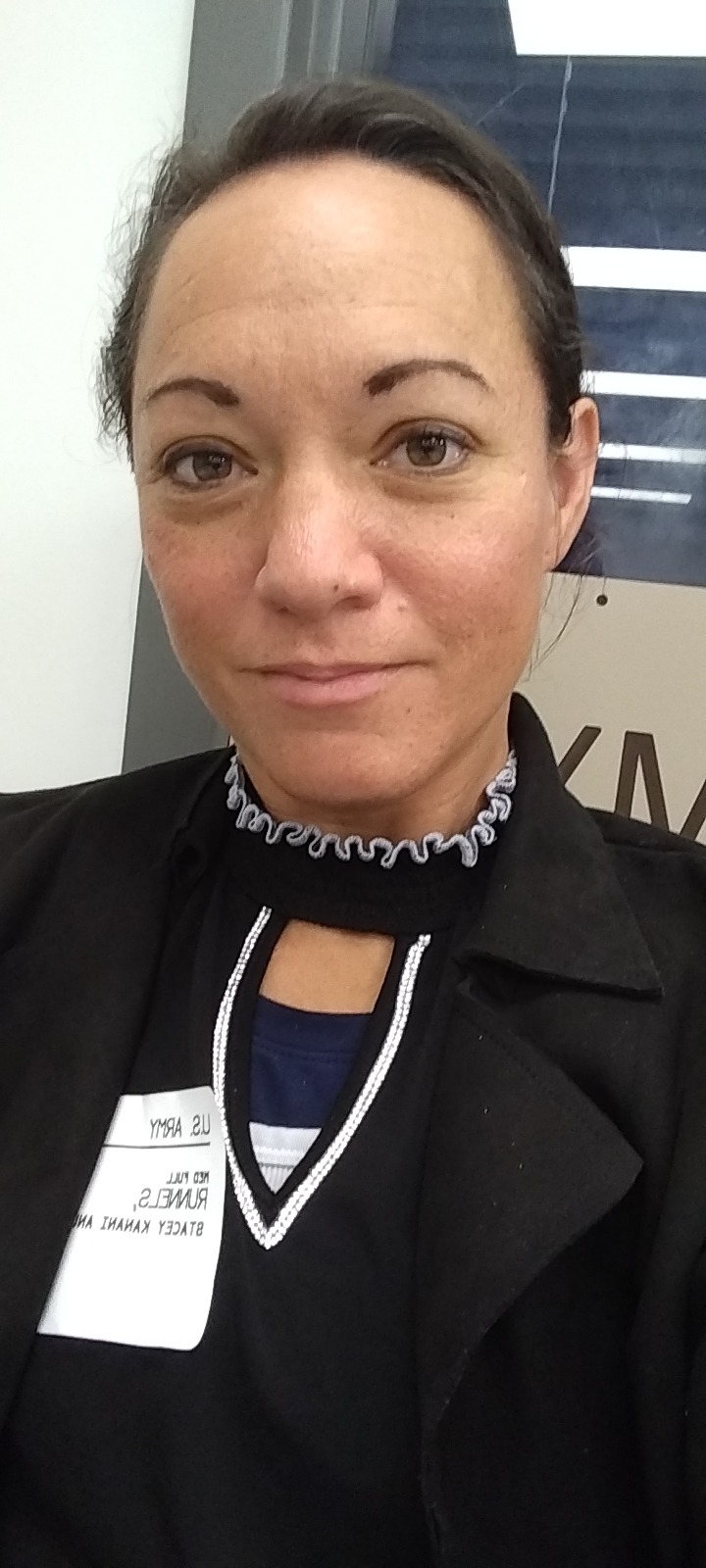

118 notes
·
View notes
Text
City Council wants to know why the Philadelphia School District is still engaging in leveling, the practice of moving teachers a month into the school year based on schools’ actual enrollment.
City Councilmember Katherine Gilmore Richardson planned to introduce legislation Thursday calling for hearings on leveling, which she has called a “troubling” practice.
The district has long shuffled teachers weeks into the school year, often for financial reasons but, recently, because it cannot find enough educators to fully staff its classrooms. Though 96% of positions are filled, in a 115,000-student district that employs about 9,000 teachers, that means hundreds of teaching jobs are still open.
Leveling works this way: If one school has fewer students than projected, it might lose teachers to another school that enrolled more students than expected.
Better-resourced districts don’t use leveling, and even some urban school systems have moved away from it.
In Philadelphia, this year, 50 teachers were forced to change schools. Some schools also lost positions that were never filled, for an overall 87-position reduction. Fifty schools gained a cumulative total of 66 teacher positions.
Some schools were “held harmless” and did not lose teachers to leveling, even though their less-than-expected enrollment meant they usually would have.Officials said 46 schools fell into this category, and 94 teachers who otherwise would have been moved got to stay put.
But Gilmore Richardson said that wasn’t good enough. She said COVID-19 learning loss made leveling an especially counterproductive process.
Leveling, the resolution she plans to introduce Thursday says, “disrupts classroom instruction and forces school communities to grapple with major changes on very short notice” and “requires teachers to move to new positions with only a week of notice, and results in some classes doubling in size overnight.” It also “actively interrupts the relationships teachers have developed with their students, leading to decreased student engagement in classrooms, and it takes away the opportunity for one-on-one instruction for classes that see significant increases in size.”
Asked how the district might avoid leveling without adding to its teacher vacancy problem, Gilmore Richardson acknowledged the school system’s hiring challenges but said “we know that what we’re doing now is not working to increase overall student achievement and increase reading and math skills. I simply want to find a more sustainable solution, one that will help us fill the vacancies and ensure our young people are being prioritized.”
Superintendent Tony B. Watlington Sr. has said leveling is necessary to ensure equity, and cited the nationwide teacher shortage and Philadelphia’s decades of underfunding as reasons why Philadelphia continues to use leveling.
“In order to serve our students equitably, and support all students in receiving a high-quality education from an excellent teacher, we must reassign teachers from our under-enrolled schools to over-enrolled schools,” Watlington said in a letter to district staff and families this week.
Gilmore Richardson said the hearings will help Council build a roadmap so it can “do our part to appropriate funds to the district and help fill any gaps that currently exist as it relates to this issue.”
8 notes
·
View notes
Text
Politico has launched a five-part series on the American "anti-vaccine political movement," and yes, there is no way to understand current anti-vax hoaxes except as a "political" movement. But Politico focuses this first entry on the Biden administration’s lack of options when it comes to actually doing a damn thing about the hoaxes, and if anyone has a solution, please drop a line to either the White House or federal public health officials because there sure doesn't seem to be one that any of the rest of us can find.
The problem, at its core, is that a large chunk of Republicans decided to make a political movement out of pandemic denialism, claiming that the most significant worldwide health crisis since AIDS or the 1918 flu epidemic was no big deal, even as over 1 million Americans died around them. Even the simple act of wearing a mask to slow the spread of the virus so that hospital morgues would not be quite so overwhelmed was seen, by a certain collection of self-absorbed monumental assholes, as an infringement on their burping, ignorant freedoms.
It was inevitable that this would evolve into contempt for the rapidly developed vaccines that would soon make COVID-19 far more survivable. Because if you're already pushing the theory that the whole pandemic has been either faked or overhyped, then dismissing the resulting vaccines would logically follow.
Even before the pandemic, all of this really stemmed from the intentional political remaking of conservatism into an explicitly anti-science, anti-education movement. This was a necessity for conservative pundits and politicians who needed to sell the base on a party platform of letting polluters pollute, letting drillers drill, and telling everyone else that whatever horrors they or their loved ones had to face as a result were simply the price of patriotism.
Campaign Action
The anti-vax movement is not exclusively Republican (although if you're looking to conspiracy-promoting gadfly Robert F. Kennedy Jr. as evidence of "Democratic" support for those themes, then you're going to have to explain why Kennedy sells his shtick almost entirely to far-right crowds and on far-right platforms). But Republicanism is now inextricably linked to it. Case in point: the vicious cruelty of aspirational fascist Gov. Ron DeSantis of Florida. He has been the most aggressive in pushing dangerous pandemic hoaxes to his base, and his gleeful, purely political appointment of an infamous anti-vax hoax promoter as Florida's surgeon general was one more middle finger. There's no other way to read the elevation of hoaxer Joseph Ladapo to the state's top health post other than a willingness, on DeSantis' part, to kill Floridians outright if there's a chance it could boost his own credentials within the conservative movement.
Because once you've appointed someone to fraudulently alter scientific findings and then announce anti-vax conspiracies as official state government policy, you've erased all of the more charitable interpretations.
That still leaves federal officials in their current bind, however. Republicans have been promoting anti-vaccine sentiments as a supposed part of conservatism's new identity; there is no way for the White House to respond to anti-vaccine hoaxes without being immediately dismissed as doing so out of partisan spite.
So I guess we all live with the return of diseases like polio, since preventing polio or anything else is just too damn partisan now?
I don't have any deep pundit insights on this one; it's the lack of options that's most maddening. The first rule of conspiracy theories is that anyone who rejects the conspiracy theory is declared to be in on the conspiracy, and calling out Ladapo, Kennedy, and others as obvious self-promoting charlatans and snake-oil hucksters will only boost their appeal to the ignorant jackass brigades who follow them. Conservatism is a cult; it no longer has policies, freeing followers to "believe" whatever needs to be believed to support the Dear Leaders of the moment.
This is convenient for anyone looking to be the next Dear Leader; it is catastrophic for anyone who expects the government to do the bare minimum of protecting citizens during a natural or human-made crisis. And as unfortunate as it is, anti-vax cranks are not primarily harming themselves. They're harming other people, which means the good old have fun with that, and let me know how that works out for you approach is neither satisfying nor responsible.
We may need cult deprogrammers to help sort this one out because I don't think either political experts or sociologists will have solutions. And whatever you do, don't talk to historians: It will turn your stomach to learn about the denialism and conspiracy promotion that happened during long-past pandemics—and how those turned out.
11 notes
·
View notes
Text
Australia News: 24.3.24.
1.) "The Australian dream of owning your own home - Albanese style. Coming to a city near you."

2.) "Media Shame File: Journalists show their economic illiteracy daily when it comes to immigration, but even so it's worrying that the political editor of The Age doesn't seem to understand how unemployment can fall during record-high population growth."
I'd say they were fully aware of what they were doing.

3.) QLD HOMESCHOOLING CRACKDOWN ->
https://youtu.be/TudVFaYc36A
Make a submission: https://qldparlcomm.snapforms.com.au/form/eetsc---education-general-provisions-and-other-legislation-amendment-bill-2024.
It is highly likely that other governments will enact similar harsh laws if they succeed in Queensland. Do not let them.
Also "Our main points of concern:
we do not want to be restricted to using the Australian Curriculum.
reporting to EVERY area in the plan and PROVING educational progress is too much and not even required in schools.
determining if home education is in the best interest of the child is a parental right, this power doesn't belong with the Education department."
Parents should have the freedom to decide how best to educate their children because education is not a one-size-fits-all solution.
4.) NDIS - What is myplace?
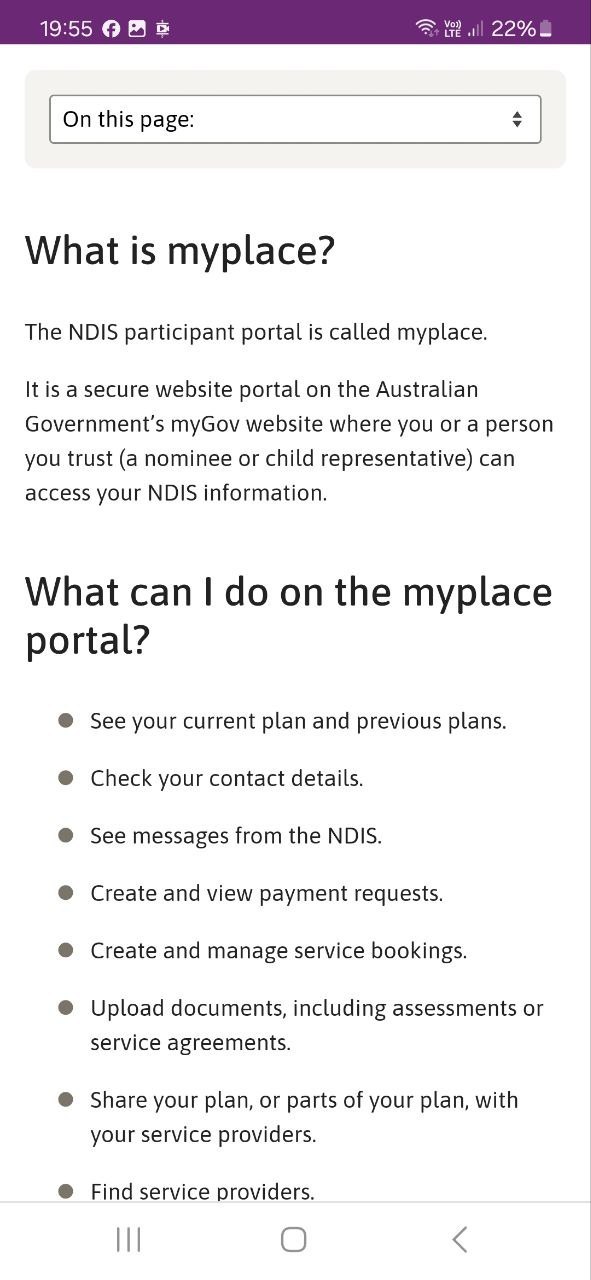
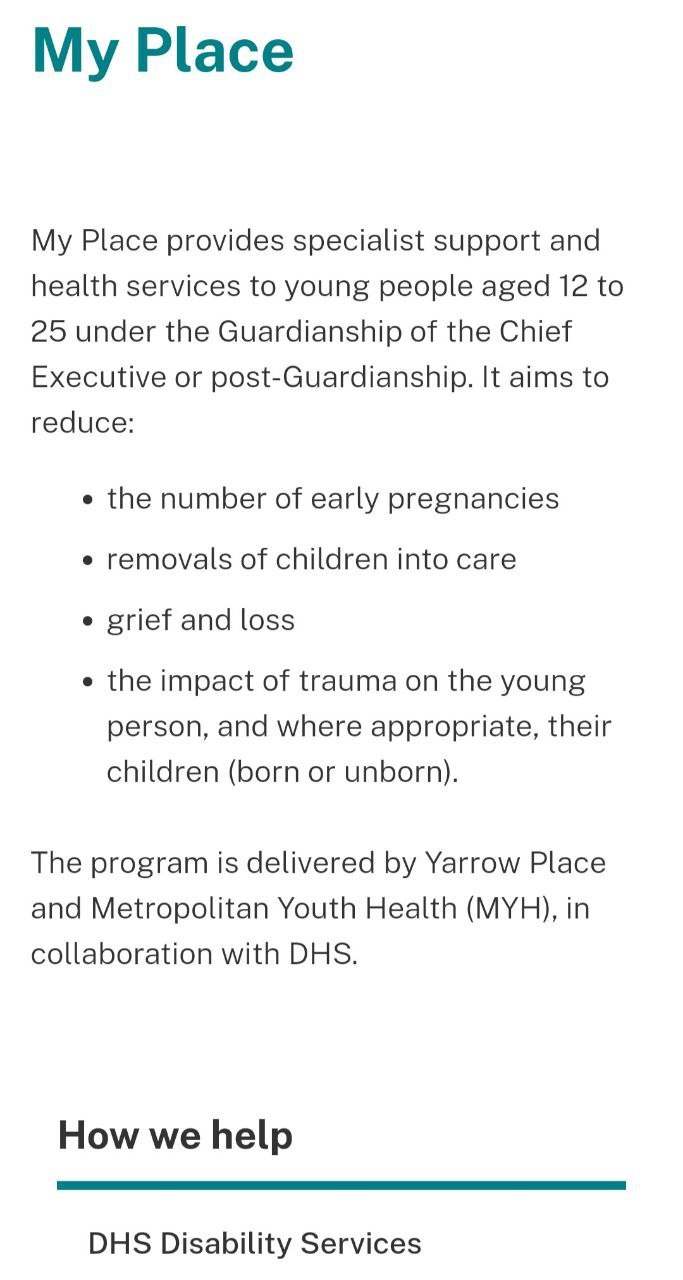

"Just a heads up for all you MyPlace people. There are already trade marked companies in Australia using that name.
Be warned you may be in danger of copyright infringement and court action.
I'm telling you this because I care that you don't get sued, and also because you really should not use someone else's business name. Be original rather than just copying someone else.
The MyPlace brand in Australia is to do with Government, Monitoring, Professional Sports Sponsorship, Public Education and The NDIS. Do you really want your name involved with that?
I wouldn't.
@roobsaussieflyers."
5.) Australia Immigration ->

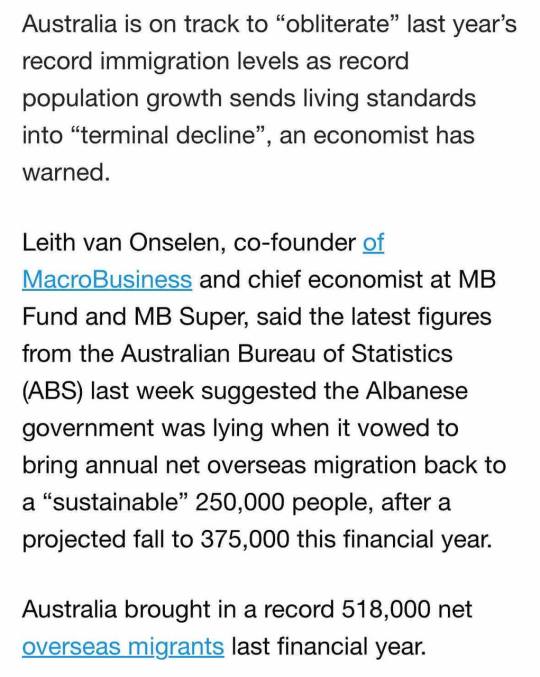
"Record immigration is causing a housing crisis that’s now a human catastrophe
The more serious governance issue is Labor federal government lying last year saying it would reduce immigration
One Nation exposed the Lib-Lab Uniparty “big Australia”
People want immigration cuts." - Senator Roberts uncensored - Telegram.
6.) "Getting a COVID jab is safer than taking aspirin."

"Currently appears on the University of Melbourne website.
“The risk of rare side effects from COVID-19 vaccines like AstraZeneca are greatly exaggerated as they are far safer than many medicines people are taking every day.” "
- @PeoplePowerAus.
2 notes
·
View notes
Text
Showcase Successful Web Development Projects

Case Studies: Showcase successful web development projects you’ve undertaken, explaining the challenges faced and the solutions implemented.
In the dynamic realm of web development, each project brings its unique set of challenges and opportunities. This article presents a collection of case studies that showcase successful web development projects undertaken. By delving into these real-world scenarios, we can gain valuable insights into the challenges faced and the innovative solutions implemented to achieve success.
Case Study 1: E-commerce Platform Upgrade
The Challenge:
A well-established e-commerce company was facing performance issues and security vulnerabilities on their aging platform. They needed a solution that would enhance their website’s speed, security, and overall user experience without disrupting ongoing business operations.
The Solution:
Platform Migration: The first step was to migrate the website to a more robust and secure platform that could handle their high traffic load. The team chose a cloud-based infrastructure to ensure scalability.
Frontend Optimization: The frontend was revamped with responsive design, ensuring seamless user experiences across devices. Performance optimization techniques, like image compression and lazy loading, were employed.
Enhanced Security: The new platform integrated advanced security measures, such as SSL/TLS encryption, web application firewalls, and continuous monitoring for threats.
The Outcome:
The e-commerce website’s performance improved significantly, with faster loading times and improved security. The company experienced a boost in customer satisfaction, higher conversion rates, and an increase in revenue.
Case Study 2: Educational Portal for Remote Learning
The Challenge:
In the wake of the COVID-19 pandemic, an educational institution needed to pivot quickly and provide a remote learning platform for students and teachers. The challenge was to create a seamless and user-friendly online learning environment.
The Solution:
Platform Development: A custom web-based educational portal was developed to facilitate online classes, assignments, and communication between students and teachers.
Video Conferencing Integration: Integration with popular video conferencing tools enabled live classes and meetings.
Content Management: An intuitive content management system (CMS) allowed teachers to upload course materials and students to access them easily.
The Outcome:
The educational institution successfully transitioned to remote learning, ensuring uninterrupted education for its students. The online platform proved to be an efficient and user-friendly solution for teachers and students alike.
Case Study 3: Portfolio Website for a Creative Professional
The Challenge:
A freelance graphic designer needed a portfolio website to showcase their work. They desired a unique and visually appealing website to stand out in a competitive industry.
The Solution:
Custom Design: A custom design was created to reflect the designer’s style and branding. The website focused on visual storytelling and the seamless presentation of the designer’s portfolio.
Performance Optimization: To ensure quick loading times and optimal user experience, the website incorporated image optimization and responsive design.
Contact and Inquiry Forms: The website included easy-to-use contact and inquiry forms for potential clients.
The Outcome:
The freelance graphic designer’s portfolio website not only captured their creative essence but also attracted new clients. The personalized design and optimized performance elevated the designer’s online presence.
Conclusion: Lessons from Successful Projects
These case studies offer valuable insights into the diverse challenges and innovative solutions that web development projects can entail. From upgrading e-commerce platforms to adapting to remote learning needs and creating personalized portfolio websites, web development continues to shape the digital landscape.
In each of these success stories, the common threads are adaptability, innovative thinking, and a focus on user experience. These traits underline the importance of understanding the unique requirements of each project and tailoring solutions that address those needs effectively.
As web development technology continues to evolve, it’s essential to embrace creativity, adaptability, and a user-centric approach to create web solutions that not only meet but exceed the expectations of clients and end-users. These case studies serve as a testament to the power of web development in transforming ideas into reality.
Source:
#kushitworld#india#saharanpur#itcompany#seo#seo services#webdevelopment#digitalmarketing#websitedesigning
3 notes
·
View notes
Text
@VigilantFox
Subscribe
Longtime Democrat Bill Ackman Fires Off a Dire Warning to America He says the Democratic Party's policies are so destructive that they're indistinguishable from what our worst enemies would do to "destroy America from within." Ackman then dropped the receipts with 33 damning examples: 1. Open borders, unvetted immigrants. 2. Inflationary spending, rising deficit. 3. Chaotic Afghanistan withdrawal, loss of life. 4.Excessive regulations stifling business. 5. Release of violent criminals without bail. 6. Decriminalizing shoplifting, promoting lawlessness. 7. Anti-fracking policies, rising energy costs. 8. DEI ideologies dividing society. 9. Gender fluidity education, harm to children’s health. 10. Support for riots, school closures for COVID-19. 11. Anti-American, anti-Israel protests unchecked. 12. Exploding antisemitism, no action. 13. Vaccine mandates, censoring scientific dissent. 14. Censorship of free speech. 15. Legal attacks on political opponents. 16. Defunding police, loss of public safety. 17. Subsidizing inferior tech, hurting innovation. 18. Government overreach in private sector solutions. 19. Banning gas-powered cars and stoves. 20. No response to terrorist attacks on Americans. 21. Withholding arms from key Middle East ally. 22. Lifting sanctions on adversaries, bad hostage deal. 23. Removing terrorists from watchlists. 24. Lying about president’s cognitive health. 25. Ignoring unhealthy food policies. 26. Proliferation of risky vaccines for children. 27. No liability for pharma industry, excessive vaccines. 28. Convincing minority youth they are victims. 29. Inadequate protection for alternative candidates. 30. Blocking alternative candidates from ballots. 31. Backroom selection of Democratic nominee. 32. Choosing inferior candidates over better options. 33. Opposing voter ID and citizenship proof.
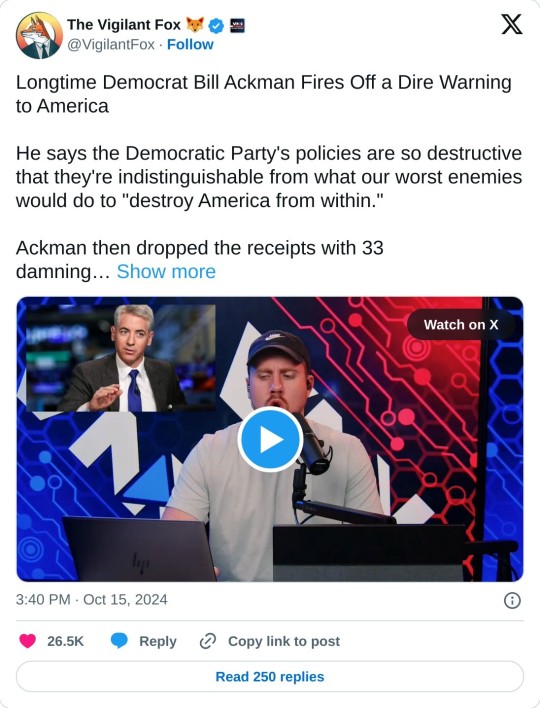
12 notes
·
View notes
Text
About 2,000 Quebecers still on waiting lists for long-COVID care - Published Nov 1, 2024
By Katrine Desautels
“We have an access problem because the long-COVID rehabilitation process is extremely long," says the chair of the steering committee for clinics.
Half of the 4,000 patients assigned to long-COVID clinics on Quebec are still on a waiting list, the chair of the steering committee for long COVID clinics says.
But Simon Décary is hopeful for people suffering from long COVID, as new measures are reportedly on the way to improve access.
In 2022, the Quebec government allocated $20.5 million to deploy 15 clinics for long COVID. No others are planned in the short term. “It takes time to build this kind of network of clinics,” Décary said, “but here we are at a good cruising speed, even if we still have a lot of work to do.”
Article content In general, Décary said, a person will wait approximately six months between the moment they find themselves on the waiting list and their first intervention with a professional. This period may vary depending on the region. He estimates each month, about 100 additional people are referred to long-COVID clinics.
About 50 health professionals work full-time in the network of long-COVID clinics, Décary said. But better access does not only require more staff.
“We have an access problem because the long-COVID rehabilitation process is extremely long. There are a lot of relapses and returns to treatment. Therefore, teams are not necessarily able to close a file quickly. We have people who do not improve over time, and the teams support them more in matters of disability and partial return to work. But these are things that take time, so we cannot see as many new cases in these clinics,” he explained.
Focus on education One solution that could be implemented is patient education. For example, patients with long COVID should not “exceed their energy envelope” to avoid relapses. Décary suggests explanatory video clips before a visit to a professional could free up the latter’s time. “It’s a model that works in a health system under pressure,” he said.
“Training professionals more broadly is really the keystone to improving access,” said Décary, who is also an assistant professor in health services organization at Université de Sherbrooke.
In September, a continuous quality improvement program was launched and deployment is currently continuing in Quebec. “The flagship of this initiative is a two-hour, online, free training course, developed by the Fédération des médecins omnipraticiens du Québec in collaboration with the Ministry of Health and the Fédération des médecins spécialistes du Québec,” Décary said.
This training should be available in early 2025, not only to doctors and specialist nurse practitioners, but to all professionals working on the front line with these patients, such as occupational therapists, psychologists and physiotherapists.
Over the past few years, long-COVID clinic professionals have experienced successes and failures trying different things with patients. “They have built a body of knowledge to help these people,” Décary said.
He recognizes training may come a little late and many patients face problems accessing care. “But arriving at a quality product to train thousands of doctors takes time,” he argued.
Article content Décary said a “pharmacological compendium” was being developed to target all the pharmacological agents that can help treat the different symptoms and comorbidities of long COVID.
COVID-19 has lifted the veil on other infections that can lead to disability. Diseases such as myalgic encephalomyelitis or Lyme disease are also post-infectious diseases and have been known for decades. “It took COVID to recognize that there is a historic failure in care and training for this class of diseases. We have started work and we are working as quickly as possible to fill the gap in medical training,” Décary said.
Since no cure exists for the moment, some people with long COVID will live with a disability, possibly permanently. These people will need monitoring throughout their lives. For others, there are sometimes improvements in their condition over the course of a few years to the point where they are no longer considered long-term COVID patients.
Tough for health workers, too Health-care professionals themselves have also struggled to access care after contracting long-COVID. Only 12 per cent of health-care workers affected by it have received rehabilitation care, reveals a research report from the Institut national de santé publique du Québec (INSPQ).
Article content Rehabilitation care, psychological monitoring and occupational therapy, which were wanted by 32 per cent of health-care workers with long COVID, were identified as the most beneficial, in particular rehabilitation services aimed at managing fatigue and daily activities.
The INSPQ survey indicates nearly one in two health-care workers who contracted COVID-19 and developed the long form of the disease managed to consult a doctor. The most common symptoms of what the INSPQ calls post-COVID-19 illness are fatigue, shortness of breath, concentration or memory problems and mental fog.
Sara Carazo Perez, co-author of the report, noted a “significant gap” between the care requested by health professionals and the care received. “Especially for certain services,” she added. “There was easier access to medical care, less access to rehabilitation care, psychological support and services to improve memory.
“We took stock of the situation in the summer of 2023, and we really noticed a difficulty of access,” she said.
Carazo Perez said the INSPQ’s mission was to draw up an inventory to inform the health authorities and provide food for thought, but the report does not answer why health workers with long COVID had difficulty to receive the care they requested.
The report also emphasizes the situation is the same elsewhere in Canada.
According to the Canadian COVID-19 Health and Antibody Survey, fewer than 50 per cent of people with long COVID say they think they received the care they needed. “This means that this is not an isolated problem in Quebec,” underlines the researcher.
Among health-care workers who reported having had COVID-19, about 15 per cent had persistent symptoms for 12 weeks or more after initial infection. At the time of the survey, six per cent of all health-care workers in Quebec still had symptoms of long COVID.
#quebec#mask up#covid#public health#pandemic#wear a mask#covid 19#wear a respirator#coronavirus#sars cov 2#still coviding#long covid#covid is airborne
4 notes
·
View notes
Text
Chronic absenteeism has become one of the most prevalent problems facing schools in the aftermath of the COVID-19 pandemic. Between 2018-19 and 2021-22, the percentage of K-12 students who were chronically absent—defined as missing 10% or more of school days, or about 18 days per year—nearly doubled nationally, from 15% to 28%. In 2022-23, rates declined only marginally from this high point and remained well above pre-pandemic levels.
However, despite considerable attention to this problem, research thus far has primarily been limited to tracking changes in state-, district-, or school-level chronic absence rates. While these efforts have established the scale of the problem, there are two key questions they do not answer. First, are the same students chronically absent each year? Second, how many days of school are students missing?
Answering these questions is important because they can reveal the depth, breadth, and persistence of post-pandemic absenteeism. This can help us better understand possible causes and consequences of the rise in absenteeism and, in turn, solutions to the problem.
5 notes
·
View notes
Text

Almost four years ago, I discovered a potential path for change. I was invited to participate in an initiative called “Black Women Thriving East of the River.” This initiative sought to engage women from Wards 7 and 8 in brainstorming, creating, and implementing interventions to foster an environment where more women from our community could secure quality employment and effectively combat cancer. On a crisp autumn morning, November 22, 2019, I joined a diverse group of 28 women who gathered at Building Bridges Across the River, formerly known as THEARC, on Mississippi Avenue SE. We shared our life experiences, challenges, aspirations, and dreams. Our backgrounds and expertise spanned health care, community service, education, workforce development, and numerous other fields. We were doctors, nonprofit leaders, community activists, and much more. We were also mothers, grandmothers, aunts, sisters, and neighbors. Over nearly two years, we convened for numerous meetings.
I came to the District from South Carolina to attend Howard University. After college in 2001, I moved to Ward 8. I established a family in the District and moved to Ward 7 in 2018. My mother was diagnosed with breast cancer in 2007 and died in 2020. My motivation for the initiative stemmed from my mother’s battle with breast cancer. I hoped to uncover ways to improve her life and the lives of others like her.
What I experienced, surrounded by fellow Black women, was both profound and unique. While I had crossed paths with some of these women in the community before, this initiative allowed me to hear their stories and narratives that shared their pain, struggles, and moments of happiness. As someone working in the health field, managing a public health research firm, addressing health disparities was not new to me. However, what made this initiative different was the fact that it was coordinated by the Jane Bancroft Robinson Foundation (JBRF), and participants were compensated for their time. This was incredible and played a crucial role in building trust. For far too long, organizations had come to our community, extracting our knowledge and experiences but often failing to deliver effective solutions.
The Black Women Thriving East of the River initiative valued us, and our opinions were genuinely respected. It was a defining moment for many of us.
This initiative offered an opportunity to bring about tangible changes within the health care system, enabling mothers and families in Wards 7 and 8 to survive and thrive. It also presented an opportunity to guide women toward quality employment and successful careers.
We mobilized to dismantle inequitable systems by convening community leaders and those most affected in our neighborhoods. Through our initiative, we devised specific, actionable interventions to address the root causes of the barriers we faced. We formed workgroups to better understand challenges related to employment, economic mobility, and cancer-related illnesses and deaths. We charted paths toward solutions.
Despite the challenges posed by the COVID-19 pandemic in 2020 and 2021, we continued our work through in-person and online meetings. Our workgroups met at various locations, including the R.I.S.E. Demonstration Center and the Anacostia Community Museum. From the outset, this endeavor harnessed the skills, resources, and talents of the exceptional individuals east of the river, from our consultants and vendors to catering chefs and meeting facilitators.
Ultimately, we created roadmaps for change, which involved analyzing the root causes of our problems, creating journey maps, prioritizing themes, designing interventions, conducting racial equity impact assessments, and engaging with stakeholders. At each step, our lived experiences guided our decision-making, and our stories as Black women with close ties to east of the river communities were integrated and prioritized.
Witnessing how our work has transformed into tangible action is incredibly gratifying.
This year, Nakeisha Neal Jones assumed the role of executive director of Black Women Thriving East of the River and began implementing the interventions. A Washington native who grew up in Wards 7 and 8, Jones is a collaborative leader with over 20 years of experience expanding access to education, workforce development, and housing resources for underrepresented families and youth. The initiative is gaining momentum, with JBRF pledging over $3 million in support and a $1 million grant from the Greater Washington Community Foundation’s Health Equity Fund.
For example, a scholarship fund for Black women has raised more than $300,000. These funds will be disbursed to women pursuing careers in health-related fields and other areas. A wide range of applicants will be considered, including those seeking licensing, stackable credentials, or professional certificates in medical transcription, community health, or as birth doulas. Also eligible are those pursuing post-secondary degrees in nursing, dentistry, medical research, physical therapy, and future doctors, surgeons, and dentists. Scholarship recipients will receive comprehensive case management support and be eligible for discretionary grant funds to address any obstacles to their success, such as child care, transportation, or program-related expenses like laptops or specialized software.
Additionally, a health careers resource map is in development, featuring an informative website to support women pursuing careers in health-related fields and beyond. The website will offer comprehensive career information, including training and support for various positions and career paths. Neal Jones is also collaborating with health care facility HR departments to understand their current and future staffing needs, creating a pipeline to guide Black women from east of the river toward these positions. Furthermore, they are developing a Cancer Patient Bill of Rights to remind women of their rights when navigating cancer.
Over time, additional components will be implemented, including programs to identify apprenticeship opportunities, an employer training series, cancer landscape analysis, cancer navigation training, cancer clinical trials training, anti-misogynoir training, a cancer Data Infrastructure Task Force, and more.
For women east of the river, change is finally within reach.
2 notes
·
View notes